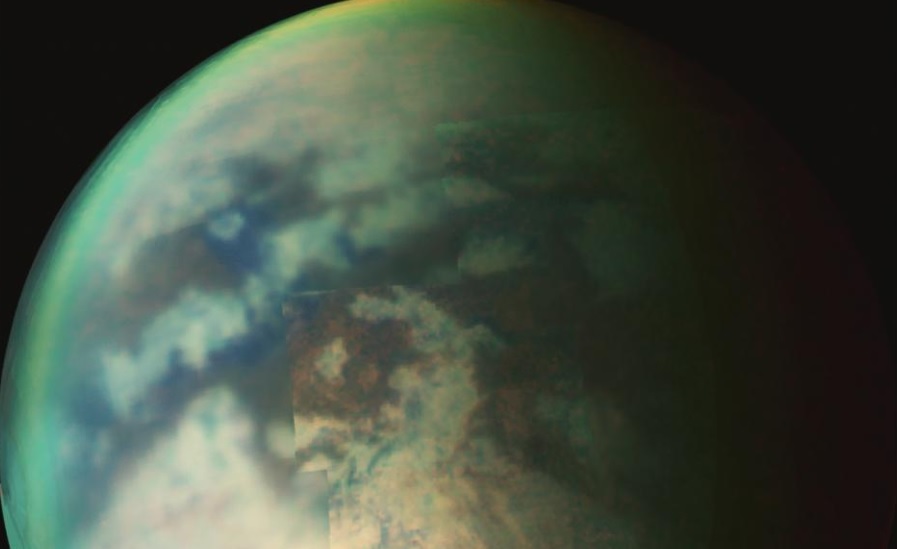Hanging out on the shores of a lake here on Earth is often a nice, relaxing way to spend an afternoon, but the same most definitely isn’t true on Saturn’s moon Titan. Aside from the incredibly frigid temperatures, scientists now believe that lakes on the icy moon are likely lined with “alien crystals” that we’d never see here at home.
The research, which was presented this week at the 2019 Astrobiology Science Conference, reveals that the ultra-cold temperatures on Titan’s surface cause compounds like butane and acetylene to freeze together and form crystals. Such crystals are never seen in nature here on Earth, but scientists managed to create their own in carefully-controller laboratory conditions.
To simulate what may be a completely natural process on Titan’s surface, researchers filled a super-cooled chamber with the kinds of compounds that we believe are plentiful on the moon, such as methane and ethane. These hydrocarbons exist as gasses here on Earth, but on Titan it’s cold enough for them to freeze into a solid and, it seems, form some very special crystals.
The researchers observed the creation of crystals that they’d never seen before, including a co-crystal made of both benzene and ethane, as well as a co-crystal of acetylene and butane.
Past observations of Titan have revealed huge lakes of hydrocarbons, and the scientists theorize that crystals like the ones they’ve managed to grow in the lab likely form at the edges of these huge bodies of liquid. The researchers refer to these as “bathtub rings.”
Unfortunately, it’s incredibly difficult to get a sharp look at what is happening on Titan’s surface due to the thick fog of gas that shrouds the planet. There are no immediate plans from NASA or any other group to send spacecraft to actually visit Titan but, if we ever do, now we know what we can likely expect.








